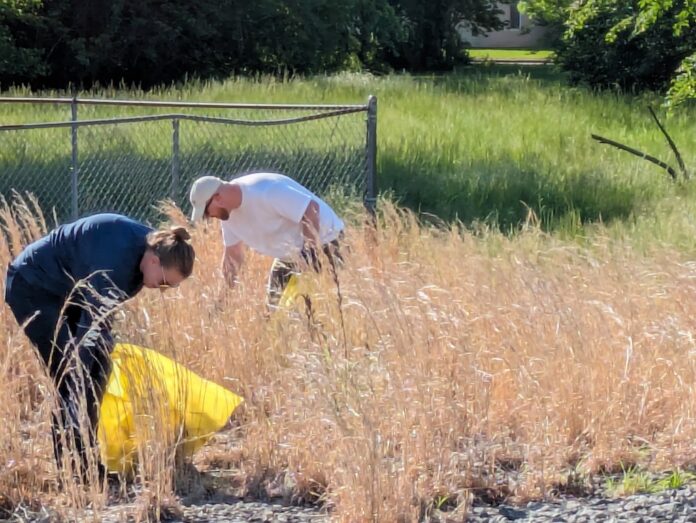Carol Johnson, Southern Indiana Business Report
BEDFORD – With construction of Phase 1 of the Monon South Trail weeks away, steps are being taken to manage invasive plants that grow along the trail.
Kaila Laplace, Regional Specialist with the State of Indiana Cooperative Invasives Management, will begin to survey the trail for invasives beginning in the Washington County area this week. She will then move to the Orleans section of the trail followed by Mitchell.
“From working in the surrounding counties, I expect to find garlic mustard, bush honeysuckle and Japanese honeysuckle,” she said.

Her territory includes Clark, Crawford, Floyd, Harrison, Jefferson, Ohio, Orange, Lawrence, Perry, Scott, Spencer, Switzerland and Washington counties.
Invasives are defined as any plant that is non-native and causes harm to human health, the environment or economy.
The Monon South Trail is still an old railroad bed, minus the rails and ties. Laplace will walk the trail and note the invasive species. Following that, she will write a management plan so that the group that manages the trail will know how to control the invasive plants. The plan will also include a map of where the invasives are located.
As for why it’s important to know where the invasives are along the trail, Laplace explained that invasives that grow unchecked have a negative impact on our outdoor recreation spaces.
A classic example of invasives having a negative impact on natural areas is the monarch butterfly. Monarchs will only lay their eggs on milkweed plants. If an invasive plant, such as honeysuckle, overtakes the milkweed, then monarch butterflies have no place to lay eggs and that leads to no more monarch butterflies.
Keeping invasives off the trails is important, Laplace said, because when using a trail, those seeds can cling to pants, boots and even the hair of dogs. Trail users then bring those seeds home with them and they can easily drop into other outdoor areas.
“If we’re not managing invasives on the trail, we can spread it to different places where there weren’t any invasive plants to begin with,” she said. “We need to manage these species for our own pleasure of hiking and to make sure we’re not spreading them.”
More than 100 plants are on the state’s invasive species list maintained by the Indiana Invasives Species Council. The list includes plants – like honeysuckle that grow wild – and shrubs and trees like burning bush and Bradford pear – that are sold at nurseries and landscape businesses.
Laplace explained how the state came to be home to so many non-native plants.
“Many invasives are brought in as landscaping plants from Asia and Europe. The reason we like them for our landscapes is the bugs don’t chew on them and they don’t have a lot of diseases,” she said. “Then they start growing in natural areas and because there are no pests or diseases keeping them in check, they grow and then out compete our native plants for resources like sun and water. The result is we lose entire plant species and these invasives create a monoculture.”
Educating the public is an important part of the work of the regional specialists like Laplace. But with continued efforts like the work on the trail, progress will be made.
“It’s all about keeping our natural areas maintained for everyone to enjoy,” she said.



